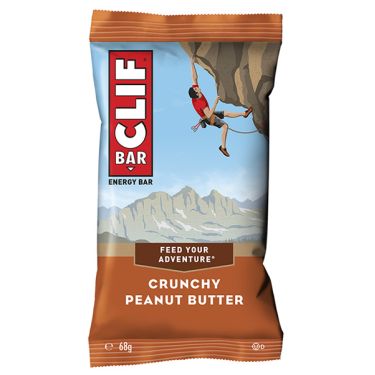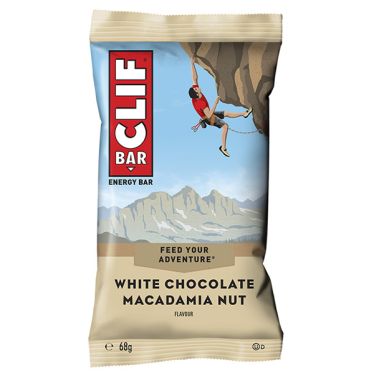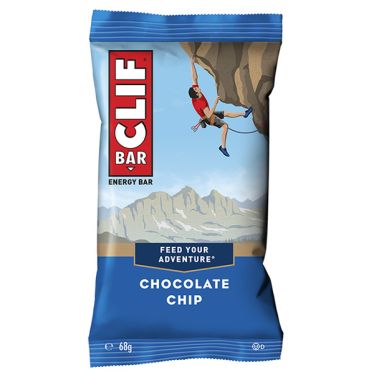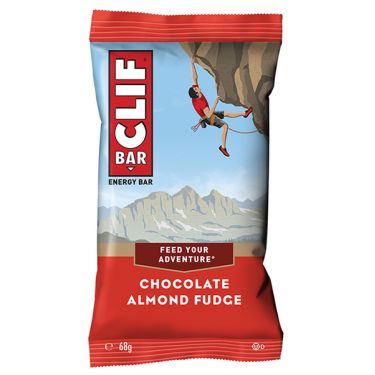-
Free delivery on purchases of €70 or more to relay points in Europe
-
Enjoy -10% on the Backpacking Food Category with the code: TREKKING10
Hydration in Hiking: How Much and What to Drink?
Hydration is one of the keys to success for any hike. Whether you're an experienced hiker or a beginner, knowing how much and what to drink is essential to maintain your energy and fully enjoy your adventure.
Importance of Hydration in Hiking
The importance of hydration in hiking cannot be overstated. It is crucial for maintaining your energy levels, preventing fatigue, and ensuring proper muscle function. Proper hydration also helps regulate body temperature and transport essential nutrients to your cells.
The consequences of poor hydration can be serious. Dehydration can lead to headaches, dizziness, muscle cramps, and in extreme cases, heat strokes or hypovolemic shock. These situations can not only ruin your hike but also endanger your health.
Understanding Hydration Needs
Factors like hike duration, intensity of effort, temperature, and altitude all influence your hydration needs. The more intense the effort and the more extreme the weather conditions, the more you will need to drink. For example, during a mountain hike, the higher altitude increases dehydration due to drier air and the additional effort required to climb slopes. Similarly, hiking under intense sunlight will make you sweat more, increasing your need for water.
Signs of dehydration to watch out for include intense thirst, dark urine, dizziness, and fatigue. Other symptoms may include headaches, dry mouth, and muscle cramps. Recognizing these signs early can help you take corrective action before things get worse. It’s also important to note that thirst can sometimes be a late indicator of dehydration, which is why it's essential to drink regularly.
How Much to Drink During Trekking?
As a general rule, it is recommended to drink about 2 to 3 liters of water per day. During the hike, this translates to about 0.5 to 1 liter of water per hour of walking. These recommendations can vary based on your size, weight, and metabolism. A larger or heavier person, for example, will require more water than a smaller, lighter person. Adjustments based on conditions are also important. In hot climates, high altitudes, or during intense efforts, you will need to increase your water intake. For instance, during a hike under the blazing sun, your body loses more water through sweat, which requires increased fluid consumption. In extremely hot conditions or during very intense efforts, it is recommended to drink up to 1.5 liters of water per hour. At high altitudes, dehydration can be accelerated due to dry air and water losses through breathing.
What to Drink?
Let’s explore the various options to stay hydrated.
Water: The Essential Base Water remains the top choice for hydration. It is easily accessible, affordable, and perfectly suited to maintain your hydration during hikes. Plain water is generally sufficient for short and moderate intensity hikes. However, for longer or more intense efforts, it may be necessary to supplement with other types of drinks to maintain a proper electrolyte balance.
- Isotonic Drinks: When and Why to Use Them Isotonic drinks can be beneficial during intense or extended hikes. They help replace electrolytes lost through sweat, like sodium and potassium, and provide a small amount of carbohydrates for energy. Using energy drinks can help prevent fatigue and muscle cramps during prolonged efforts. Isotonic drinks are specially formulated for quick absorption by the body, allowing for more efficient rehydration.
- Electrolyte Drinks: A Key Option for Long Efforts Electrolyte drinks are designed to replace essential minerals lost through sweat. These minerals, or electrolytes, include sodium, potassium, magnesium, and calcium. They play a crucial role in maintaining fluid balance, nerve function, and muscle function. During long or intense hikes, electrolyte drinks can help prevent muscle cramps and maintain your energy levels. Check out our range of electrolyte drinks to find the one that works best for you.
- Natural Alternatives For lucky hikers who trek in areas where wild fruits are abundant, natural alternatives like coconut water or diluted fruit juices can also be helpful. These offer natural electrolytes and effective hydration while being tasty. For example, coconut water is rich in potassium and can be a refreshing and nutritious alternative. Diluted fruit juices can provide extra vitamins and minerals, along with a small amount of sugar for energy.Le matériel nécessaire pour une bonne hydratation
Equipment Needed for Good Hydration
A full day of hiking requires several liters of water. In hot weather, 4 to 5 liters of water may be required, which represents weight and bulk in your backpack. We will present the different options to optimize your water storage.
- Reusable Bottles and Canteens : Reusable bottles and canteens are the classic accessory for any hiker. They are eco-friendly and allow you to carry water easily. There are soft models, called flasks, as well as rigid models made of stainless steel or plastic. Neither is better than the other. Choose the option that suits you best. Bottles with volume indicators can also help you keep track of your water consumption throughout the day.
- Hydration Bladders : Hydration bladders with a drinking tube offer a practical solution. They allow you to drink without stopping, which is especially useful during long or technical hikes. Most backpacks are compatible with hydration bladders. A space in the main compartment is dedicated to them, and a hole for the tube is provided. Some models even have a magnetic system on the backpack strap to prevent the tube from swinging while you walk.
Portable Water Filters and Purification Tablets: We mentioned this earlier. How can you optimize weight and space? With a portable water filter. Rather than carrying 4 or 5 liters of water on your back, carry 2 liters of drinkable water and a water filter. You can refill your bottles and hydration bladders as soon as you come across a fountain or river. A water filter purifies the water to make it drinkable. Some models weigh less than 100g and are a great alternative to 1.5-liter bottles. Just make sure you have water sources along your route.
3 Tips to Stay Hydrated
Now that you know what to drink, how much, and what equipment to use, here are three tips to optimize your hydration.
Consumption Frequency Adopt a regular drinking rhythm. Drink regularly, even if you're not thirsty, to avoid dehydration. A good rule is to take one to two sips every 10 minutes. Keep your bottle or hydration system within reach to remind yourself to drink frequently.
Water-Rich Foods Carry foods that are rich in water. Fruits and vegetables like cucumbers, watermelons, and oranges can help you stay hydrated while providing essential nutrients. These foods can also be refreshing and energizing, especially during hot days. The downside is that fruits can be heavy. Unless you come across a farmer or a grocery store during your hike, this tip can be difficult to implement.
The Importance of Breaks Take regular breaks to drink and rest. This helps maintain your energy levels and hydrate effectively. You will also lower your body temperature and reduce sweating, which is a cause of dehydration. Plus, breaks give you the opportunity to enjoy the scenery and take photos!
Clif Bar energy bar - Oats and blueberries

Clif Bar energy bar - Oatmeal and peanut butter

Clif Bar energy bar - Oatmeal, chocolate chips

Common Mistakes and How to Avoid Them
After reviewing the tips, let's go over how to avoid common mistakes.
- Drinking Too Much or Not Enough : Avoid drinking too much or too little. Excessive water consumption can lead to hyponatremia, where sodium levels in the blood drop dangerously low. On the other hand, a lack of water can cause dehydration. Finding the right balance is crucial for effective hydration. Listen to your body and adjust your water intake according to your individual needs and the conditions of your hike.
- Neglecting the Signs of Dehydration : Don't ignore the signs of dehydration. Learn to recognize the symptoms so you can act quickly. If you experience intense thirst, unusual fatigue, or cramps, it's time to take a break and drink. Prevention is always better than managing the consequences of dehydration.
- Inappropriate Beverage Choices : Be mindful of inappropriate drinks. Alcohol and excessive caffeine can further dehydrate your body. Opt for water, isotonic drinks, or natural alternatives to stay hydrated. Avoid sugary drinks as well, as they can disrupt your hydration and energy balance.
Key takeaways
To summarize, don't wait until you're thirsty to hydrate. It's recommended to drink 500 ml of water per hour, and this amount may need to be increased in hot weather. Finally, don't neglect your equipment. In addition to your water bottle or hydration bladder, we recommend carrying a water filter.
A Word About Lyophilise & Co 🌶
Based in Lorient, Lyophilise & Co is the go-to reference for freeze-dried meals and high-quality outdoor equipment. Whether you’re a hiker, skipper, trail runner, bushcraft enthusiast, or bivouac lover, we offer a wide range of technical products tailored to all your adventures. With over 2,000 products available, we’re here to support your expeditions, both in France and internationally.
If you have any questions, our experts are available and happy to assist you:
☎ +33 2 97 87 23 73
✉ team[at]lyophilise.com
We also have a showroom open from Monday to Friday:
📍 6 bis rue du Sous-Marin Vénus, 56100 Lorient
Related posts
-
 23 Christmas gift ideas for hiking and camping
Posted in: Equipment2024-11-15Discover our gift ideas for hiking and camping enthusiasts. You'll find the perfect gift in this extensive list,...Lire la suite
23 Christmas gift ideas for hiking and camping
Posted in: Equipment2024-11-15Discover our gift ideas for hiking and camping enthusiasts. You'll find the perfect gift in this extensive list,...Lire la suite -
 Food during the Marathon des Sables, by Carole Pipolo
We interviewed Carole Pipolo, founder of Outdoor And News and partner of Lyophilise & Co, to ask her about...Lire la suite
Food during the Marathon des Sables, by Carole Pipolo
We interviewed Carole Pipolo, founder of Outdoor And News and partner of Lyophilise & Co, to ask her about...Lire la suite -
 Sailing - What to Eat?
In this article, dive into the world of provisioning with freeze-dried recipes, along with their alternatives and...Lire la suite
Sailing - What to Eat?
In this article, dive into the world of provisioning with freeze-dried recipes, along with their alternatives and...Lire la suite -
 Special Volvo Ocean Race
Posted in: Food2024-11-15What sailors eat during the race!Lire la suite
Special Volvo Ocean Race
Posted in: Food2024-11-15What sailors eat during the race!Lire la suite -
 Special Vendée Globe - What Do Skippers Eat?
Posted in: Food2024-11-15For weeks, the skippers of the Vendée Globe have been meticulously preparing their onboard provisions, and we thank...Lire la suite
Special Vendée Globe - What Do Skippers Eat?
Posted in: Food2024-11-15For weeks, the skippers of the Vendée Globe have been meticulously preparing their onboard provisions, and we thank...Lire la suite
















Leave a comment